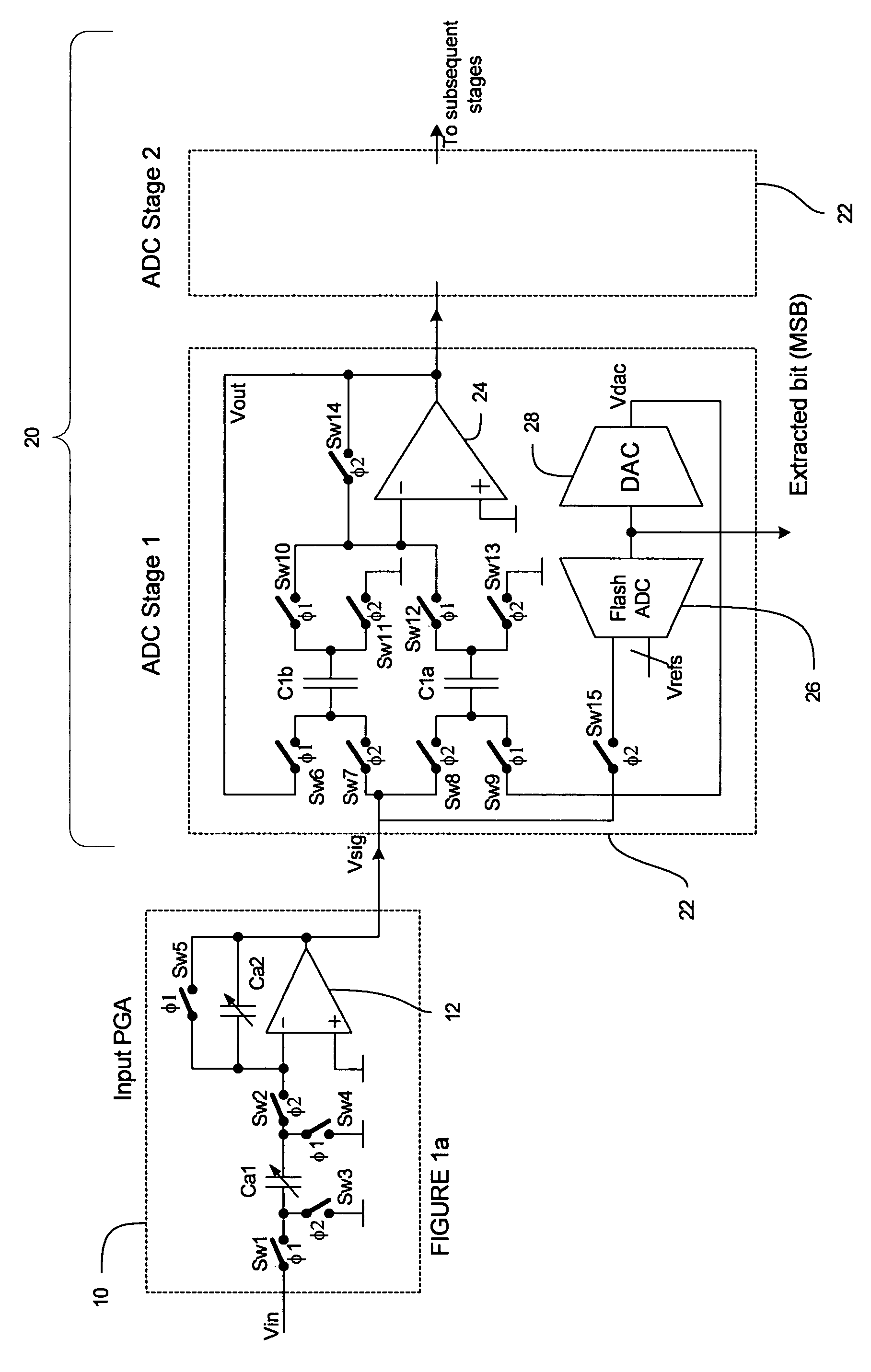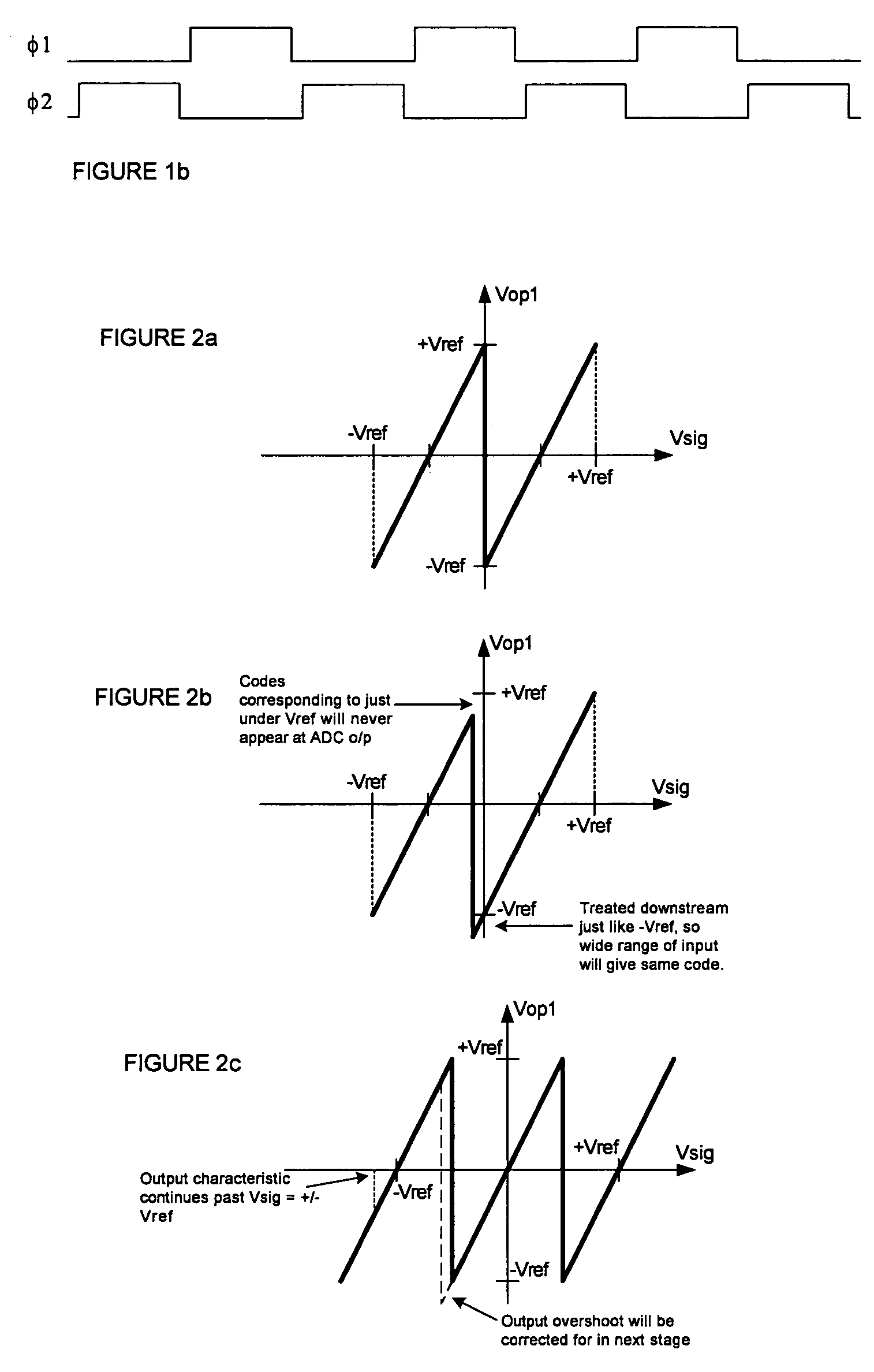Analogue to digital converter
a converter and digital technology, applied in the field of analog to digital converters, can solve the problems of increasing the cost of dies, inherently more difficult to achieve, and presenting greater design challenges for pga op amps
- Summary
- Abstract
- Description
- Claims
- Application Information
AI Technical Summary
Benefits of technology
Problems solved by technology
Method used
Image
Examples
Embodiment Construction
[0095]The circuit of FIG. 6 shows a recirculating stage of an ADC, similar to that illustrated in FIG. 4, but with functional and operational distinctions. Table 1 illustrates a correspondence between the functional equivalence of certain of the switches of the arrangement of FIG. 4 and that of FIG. 6.
[0096]
TABLE 1FIG. 4FIG. 6Sw52Sw84Sw53Sw85Sw54Sw86Sw55Sw87Sw56Sw92Sw59Sw97Sw61Sw98Sw62Sw80Sw63Sw81Sw64Sw82Sw65Sw83Sw66Sw88Sw67Sw89Sw68Sw90Sw69Sw91Sw70Sw101
[0097]The structural difference is that the φ2 switches (Sw57, Sw58, Sw60) that were connected to C1a, C1b and the flash ADC, in series with other switches (Sw50, Sw51) driven by φ2x, φ2y respectively have been replaced by parallel switches (Sw93, Sw94; Sw95, Sw96; Sw99, Sw100) connected to φ2x, φ2y. Since φ2 is equivalent to φ2x.OR.φ2y, this connection is equivalent. The total number of switches is increased by one, but each switch can be of higher on-resistance and thus occupy less area.
[0098]An advantage of this arrangement is that...
PUM
 Login to View More
Login to View More Abstract
Description
Claims
Application Information
 Login to View More
Login to View More - R&D
- Intellectual Property
- Life Sciences
- Materials
- Tech Scout
- Unparalleled Data Quality
- Higher Quality Content
- 60% Fewer Hallucinations
Browse by: Latest US Patents, China's latest patents, Technical Efficacy Thesaurus, Application Domain, Technology Topic, Popular Technical Reports.
© 2025 PatSnap. All rights reserved.Legal|Privacy policy|Modern Slavery Act Transparency Statement|Sitemap|About US| Contact US: help@patsnap.com



